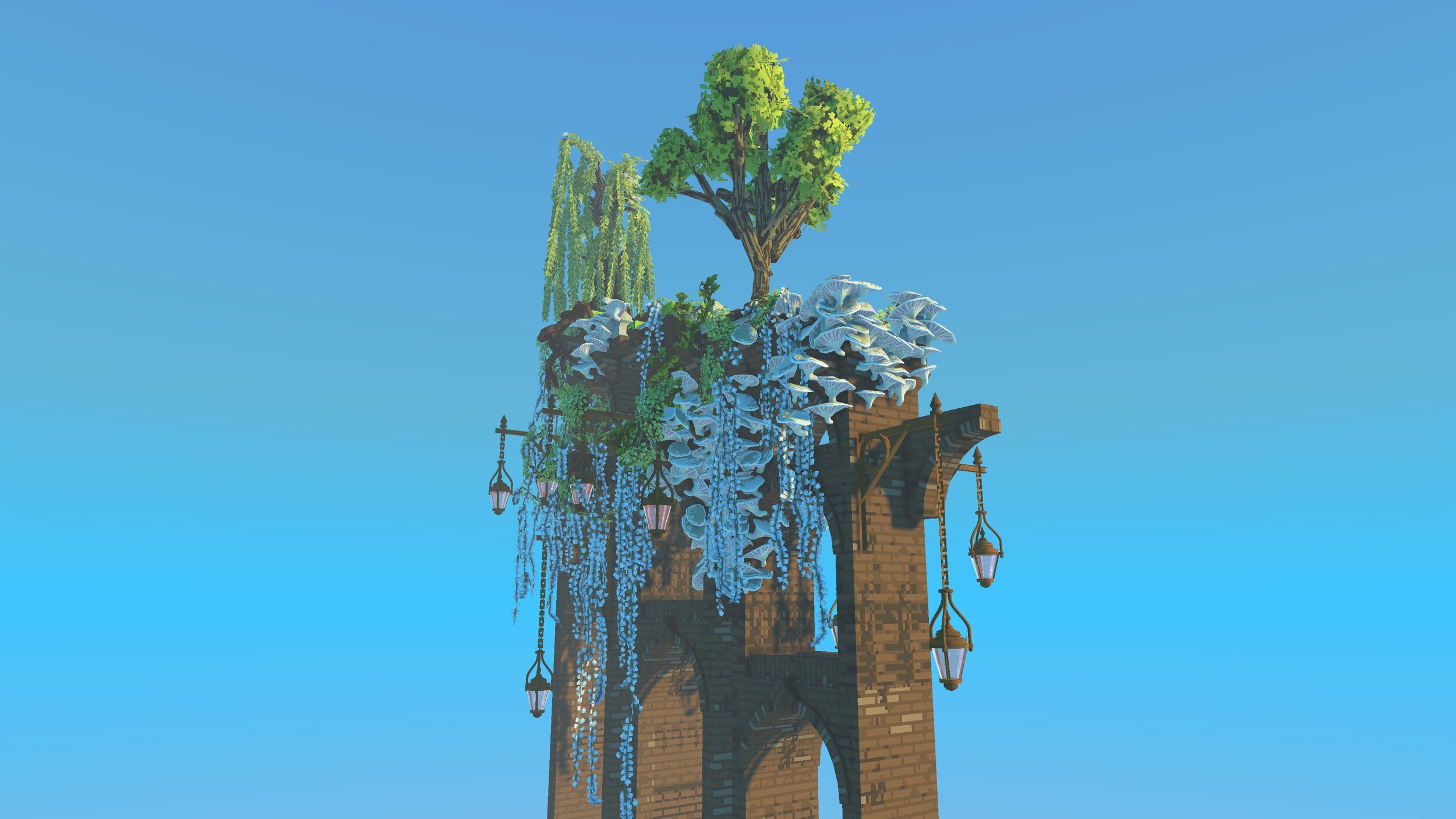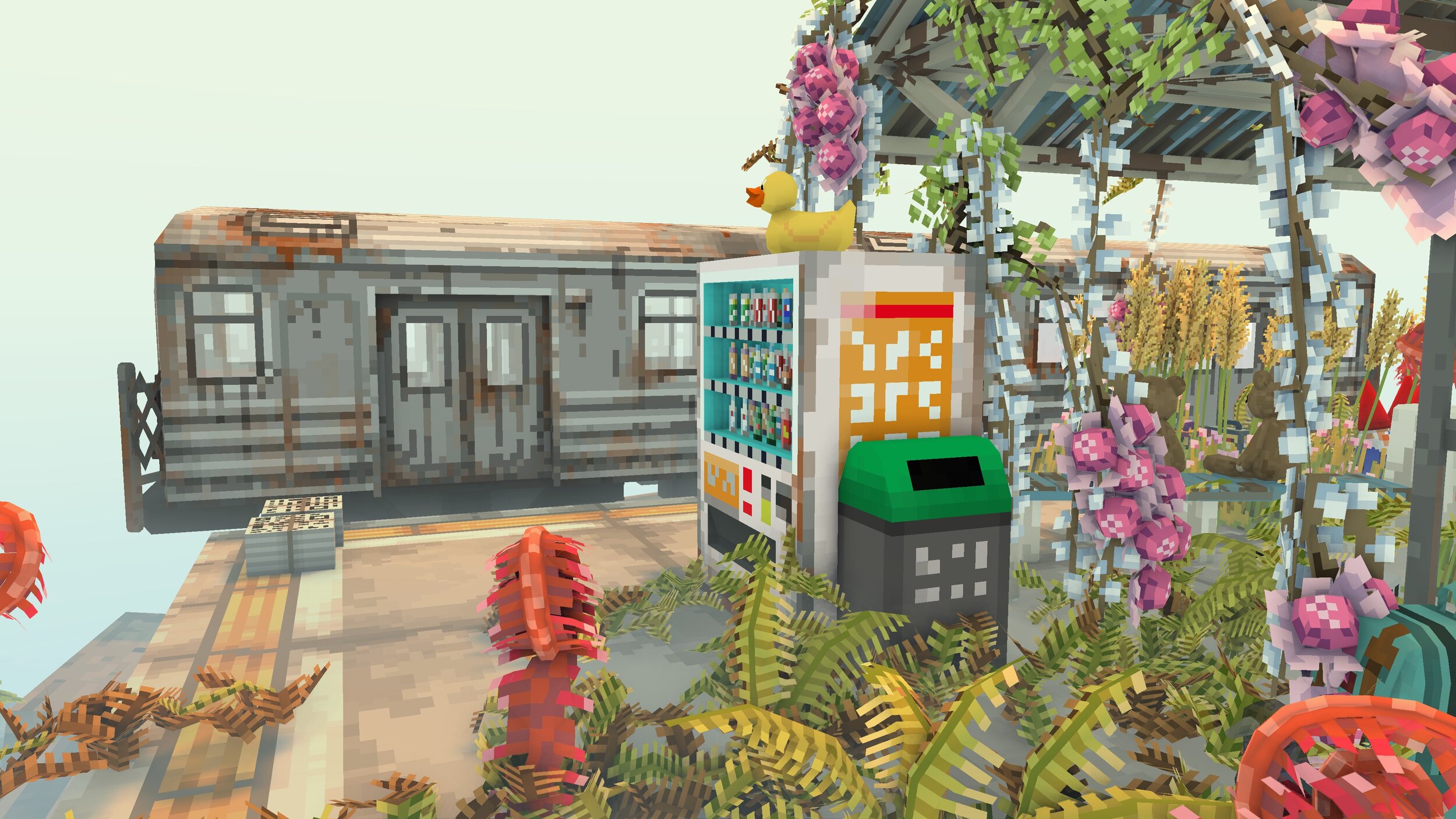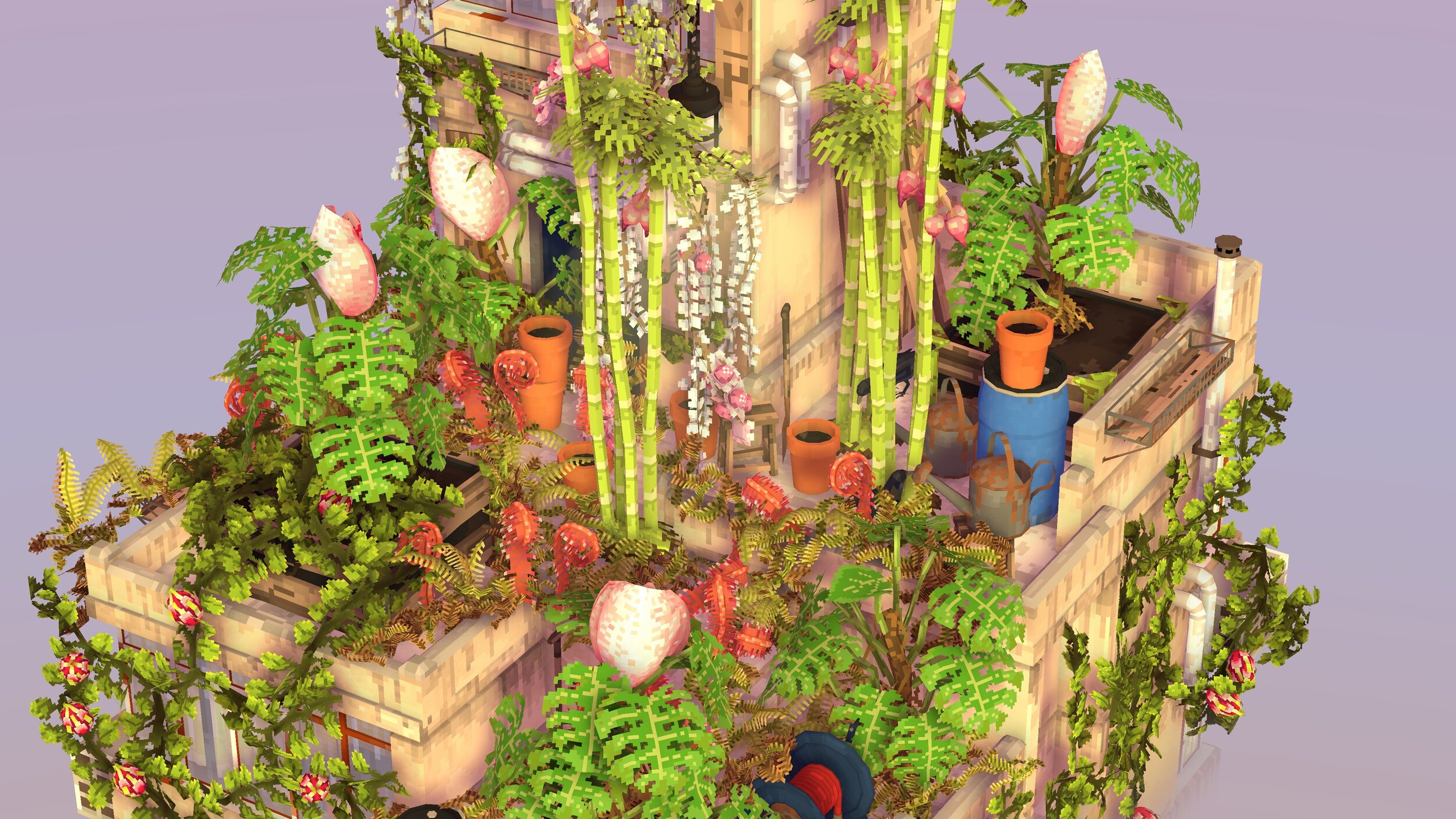Review | Cloud Gardens - Beautiful Weeds
There is a car out in the woods which I can’t explain.
I have a teenager's memory of discovering it growing dim in an adult brain. First off, it was ancient, definitely from the era of American cars where everything was bulbous and metal and seatbelts were optional. It stood on its side between two huge oaks on a steep vale deep in an old growth forest. The car was rusted beyond belief and while I could never get the trunk fully open my flashlight spied a rotten suitcase deep inside of it. The growth of the old north Georgia forest is too dense to allow any car, much less this mid-century monster, to drive through it. And there is no indication whatsoever of any nearby structures. The thing about this scene in the forest of the huge car standing up on one side held by two trees are the deep old gouges that can be seen in the bark of the trees. Looking for all the world like they caught a Buick which had fallen from the sky.
Years later, I revisited the car and it was much the same save for the greater perfusion of kudzu and fern which had taken root and grown upon its bones. There’s very little a layman like myself can glean from the scene of plants taking over the detritus of human building beyond the simple story that “people were once here and now they are not.” However, that simple story is one told by Cloud Gardens with a deftness and sensitivity that will undoubtedly strike a chord with many game players as it did with me.
You are not in competition, you are in bloom.
So, what kind of game is Cloud Gardens? Cloud Gardens is like a game of Mancala where the stones you place give you extra stones and also you’re an only child so you’re playing both sides at once. It’s also like stumbling across a tiny home on Christmas Eve festooned with loose girders, overturned train cars, and rusty fences and you’re the Santa Claus of Climbing Vines. You could also say Cloud Gardens is Tetris for Mother Earth if she only worked one acre of the post-apocalypse at a time. Or, most deliciously, it’s Magic the Gathering but you only have land cards and your opponent is the table.
My point is, Cloud Gardens is a game about growing plants on little dioramas of abandoned human structures and refuse. But, critically, it is also about adding human junk to that scene. Here’s the loop: the level will show you a bare little cube of space: some dirt, a power pole, a rail of a train track. Hanging testicularly from a bit of broken architecture is a seed or two. You click the seeds to grab them and you click a bit of the ground or the side of an object to plant them. Then, the game populates a little box in your HUD with bouncy, bubbly, junk objects. You click on one of those to grab it and you click onto the scene to place it. Place it near your seedlings and watch as they start to grow. Place more and they grow further. Eventually, any plant you place will produce buds which you can gather one by one or suck up with a vacuum cleaner tool. These buds fill a resource meter and can be spent on new plants which are selected from a gorgeous array of holographic playing card-like menu options. So, you find yourself in a delicate loop of putting down a cement brick or a few cans (or a campervan, or even a full building, later on), harvesting the buds and blooms from a few nearby growing things, buying a couple more seeds, placing them down with care and then reaching back to the junk box for a garden gnome or a pair of old shoes to place amongst them. As this loop of care and natural craft proceeds a percentage counter on the other end of the screen fills, when it reaches 100% the words “Next Scene” appear. And although you may still fiddle to your heart’s content with the scene you’re currently looking at, this is Cloud Gardens in a nutshell, as it were.
This isn’t a place for humans to easily harvest plants, it’s a spontaneous bouquet of life.
Importantly, if you use up all your resources before you are able to fill the percentage meter you will have to start over. This can happen due to a failure to plan on your part or, most often for me, a failure to stop adding junk and throw in more plants to maximize the value of each junk object I’ve placed. Each junk object adds to the growth of as many plants as are in its little range of effect. This is the most interesting, unique, and essential game-design decision in Cloud Garden: through mechanics the game trains you to work within its aesthetic. You must create scenes of densely packed and chaotic overgrowth where a multitude of plants cover and thrive over a multitude of discarded looking and messy human objects. Neatly ordered flower beds and carefully weeded rows do not a cloud garden make.
The objective here is to nudge the player and help them learn to play the game in the most satisfying and visually pleasing way possible. As a task, filling the percentage meter is not as much of a challenge or a puzzle as it is a bit of friction for the player to bite into and keep them playing. The percentage meter is not a jawbreaker, it’s gum. And I have found myself chewing on it for hours. Cloud Gardens is a true “Wait, how long have I been sitting here?” game experience. The ambient music adds to this, it is warm and pleasant and imbues a richness to the atmosphere. Each seedling, too, has its own instrumentation which plays and weaves in as they are planted. The hours pass in a cheery calm as you go scene to scene.
As for this, we may never know.
And what to do with the scenes when you’ve perfected them? The game contains, a single keystroke away, a serviceable little camera tool. I wish I had a bit more precise tools for lining up a shot, as it stands you enter a zoomingly fast first-person mode that recalls noclipping in Half-Life while the f-stop, lens type, and depth of field options we gamers have been spoiled with in other titles have been spared. Although, you can record 60 FPS videos of your plants growing. You can also control the colour of the natural light and the position of the sun along with other atmospherics which can then be saved to profiles. This is especially joyful to tweak and fiddle with in the game's bodacious Creative Mode, which I used to recreate my mysterious forest memory.
Each individual scene is on a Mario-esque level map which labels each in the world-level format (i.e. World 1-6, World 3-2) which helped remind me that despite its dreamlike nature Cloud Gardens is a game with progression. Each collection of levels is named simply, like Junkyard and Factory, and delivers on its concept. Delightful to the discerning lore-lovers and place-imaginers among us is seeing how the straight line of the Railroad levels passes through the enclosed worlds’ sections on the overmap. It is the world we always return to, with a level representing another train station cropping up every so often. The exquisite delicacy found in all parts of Cloud Gardens can be observed here breathing the gentlest suggestion of a coherent landscape of post-human engineering and manufacture over which we grow our verdant garden of stillness and rest.
Cloud Gardens is an artistically satisfying game that allows the non-diorama builder to experience the loveliness of the confidently arranged detail, the thrill of the unexpected aesthetic coherence, and the magic gift of gardening’s simplicity.
This is my stop.










